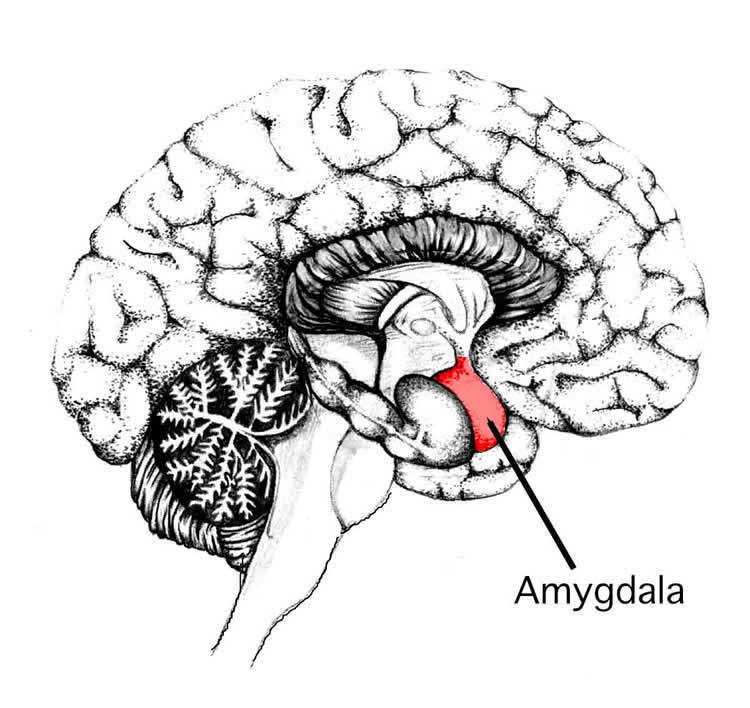Summary: Researchers report the amygdala may play a bigger role in facial recognition than previously thought. According to a new study, the amygdala responds more specifically to images of the face than the fusiform face area does.
Source: UT Dallas.
New research from the Center for BrainHealth at The University of Texas at Dallas reveals that the amygdala may play a larger role in the brain’s ability to recognize faces than previously thought.
In a study published in Neuropsychologia, scientists found that the amygdala responded more specifically to faces than the fusiform face area (FFA), part of the brain traditionally known for facial recognition.
“The amygdala is a part of the brain associated with survival — fight or flight. It acts as a gateway regulating what we pay attention to,” said Dr. Daniel C. Krawczyk, deputy director of the Center for BrainHealth and associate professor in the School of Behavioral and Brain Sciences. “We would expect the amygdala to be activated in the presence of scary or threatening faces — something that our brain might perceive as potentially impeding our survival. However, we were surprised to find how active the amygdala is in the presence of emotionally neutral faces.”
The research included 69 participants, between 19 and 65 years old, who had a traumatic brain injury (TBI) at least six months beforehand. More than half of the participants had some symptoms of post-traumatic stress disorder.
“This finding highlights the importance of social cognition, which includes the ability to recognize faces. This process is key for our survival,” said Krawczyk, the study’s co-author and the Debbie and Jim Francis Chair in Behavioral Brain Sciences.
The results are similar to a prior study that was conducted with individuals without TBI.
“While this study helps to further elucidate the role of the amygdala in visual recognition and memory, it is not exclusive to TBI patients, and indicates that further research with other patient populations is warranted,” said Dr. Leanne R. Young, executive director of the Brain Performance Institute at the Center for BrainHealth, who led the study.
In the study, functional magnetic resonance imaging measured changes in the blood-oxygen-level-dependent signal in the left and right amygdala as participants viewed a series of neutral faces and scenes. Participants were instructed to concentrate on pictures of faces and scenes, faces or scenes, or both simultaneously.
Evidence of face-selective activity in the amygdala was found in 60 percent of participants, demonstrating that the amygdala strongly responds to neutral faces. The amygdala was less responsive to scene stimuli than the FFA. This face-specificity is of particular interest for neuroimaging tasks used to evaluate the impact of frontal lobe impairments on strategic attention.

“Numerous studies have revealed that the amygdala is critical for consciously and non-consciously processing facial expressions, and a smaller set of studies has revealed a role for the amygdala in assessing whether an individual appears to be trustworthy or not. Our study, however, is the first to indicate that the amygdala actually responds more selectively to faces than the fusiform face area,” Young said.
“These findings lead us to believe that the amygdala may be getting a ‘preview’ before the brain’s primary visual cortex sends the signal to the fusiform face area.”
Funding: The study was funded by the Department of Defense.
Source: Emily Bywaters – UT Dallas
Publisher: Organized by NeuroscienceNews.com.
Image Source: NeuroscienceNews.com image is in the public domain.
Original Research: Abstract in Neuropsychologia
doi:10.1016/j.neuropsychologia.2017.08.026
[cbtabs][cbtab title=”MLA”]UT Dallas “Amygdala May Play Bigger Role in Facial Recognition.” NeuroscienceNews. NeuroscienceNews, 12 February 2018.
<https://neurosciencenews.com/amygdala-facial-recognition-8475/>.[/cbtab][cbtab title=”APA”]UT Dallas (2018, February 12). Amygdala May Play Bigger Role in Facial Recognition. NeuroscienceNews. Retrieved February 12, 2018 from https://neurosciencenews.com/amygdala-facial-recognition-8475/[/cbtab][cbtab title=”Chicago”]UT Dallas “Amygdala May Play Bigger Role in Facial Recognition.” https://neurosciencenews.com/amygdala-facial-recognition-8475/ (accessed February 12, 2018).[/cbtab][/cbtabs]
Abstract
Amygdala activation as a marker for selective attention toward neutral faces in a chronic traumatic brain injury population
There has been great interest in characterizing the response of the amygdala to emotional faces, especially in the context of social cognition. Although amygdala activation is most often associated with fearful or angry stimuli, there is considerable evidence that the response of the amygdala to neutral faces is both robust and reliable. This characteristic of amygdala function is of particular interest in the context of assessing populations with executive function deficits, such as traumatic brain injuries, which can be evaluated using fMRI attention modulation tasks that evaluate prefrontal control over representations, notably faces. The current study tested the hypothesis that the amygdala may serve as a marker of selective attention to neutral faces. Using fMRI, we gathered data within a chronic traumatic brain injury population. Blood Oxygenation Level Dependent (BOLD) signal change within the left and right amygdalae and fusiform face areas was measured while participants viewed neutral faces and scenes, under conditions requiring participants to (1) categorize pictures of faces and scenes, (2) selectively attend to either faces or scenes, or (3) attend to both faces and scenes. Findings revealed that the amygdala is an effective marker for selective attention to neutral faces and, furthermore, it was more face-specific than the fusiform face area.






